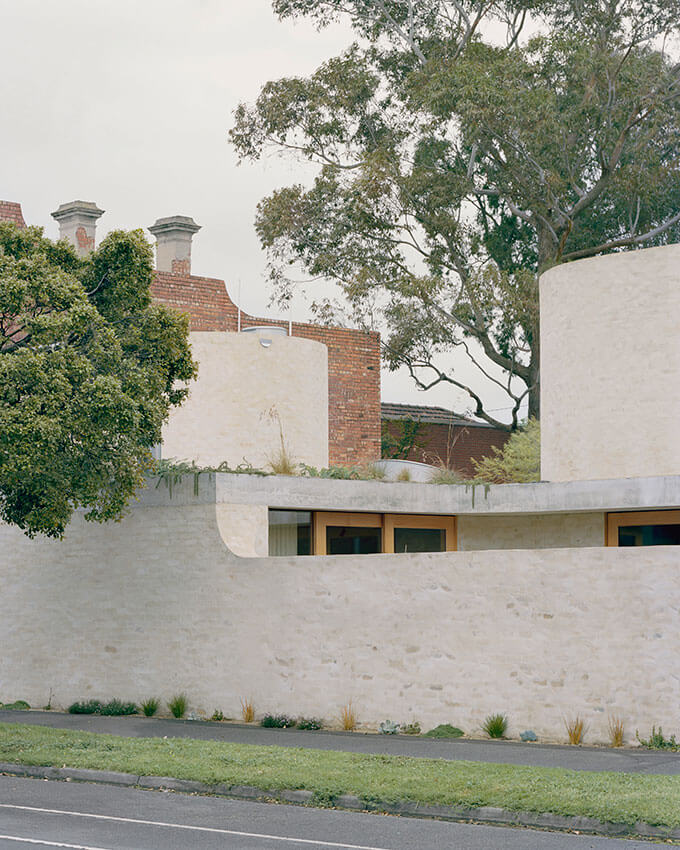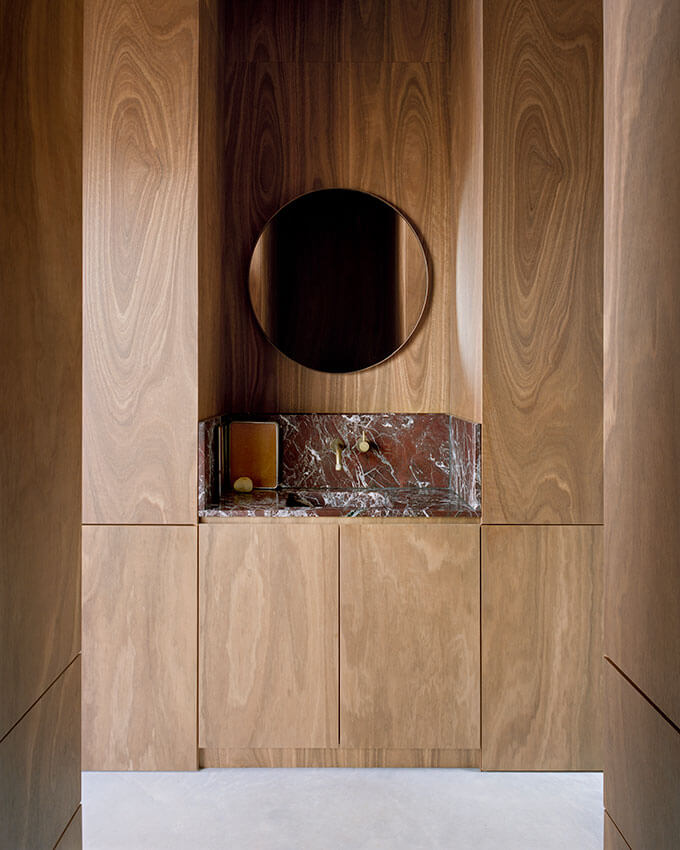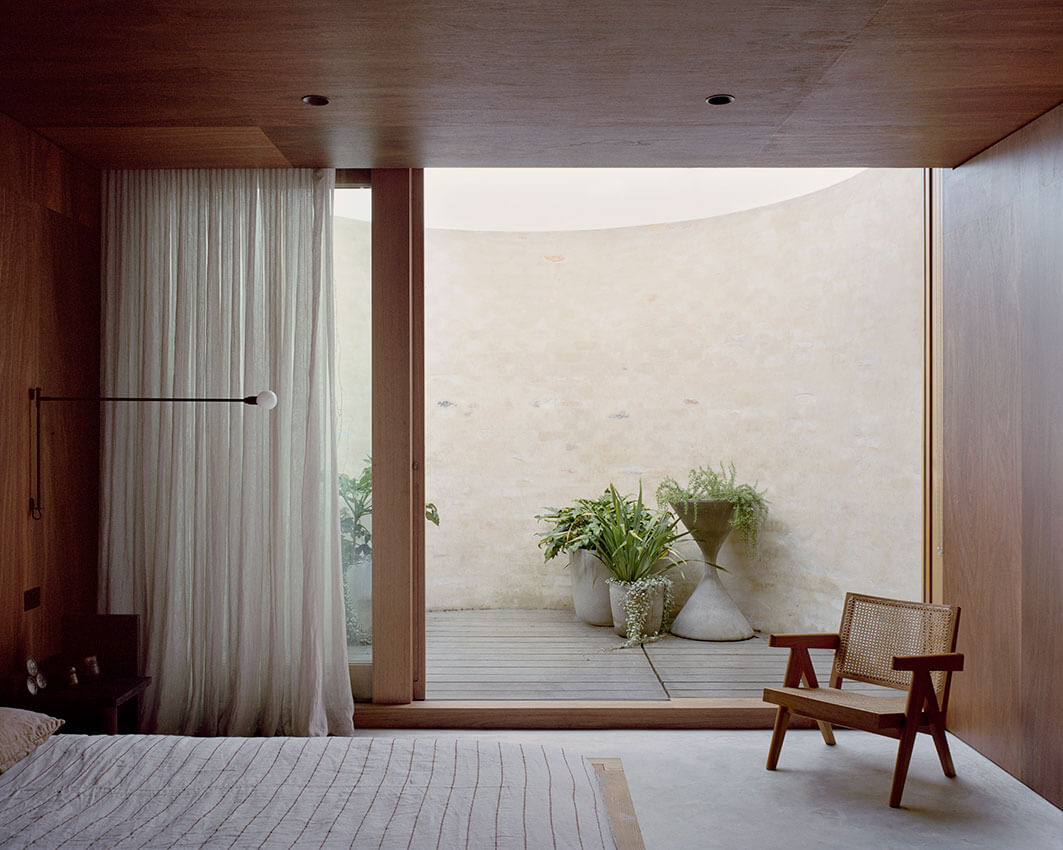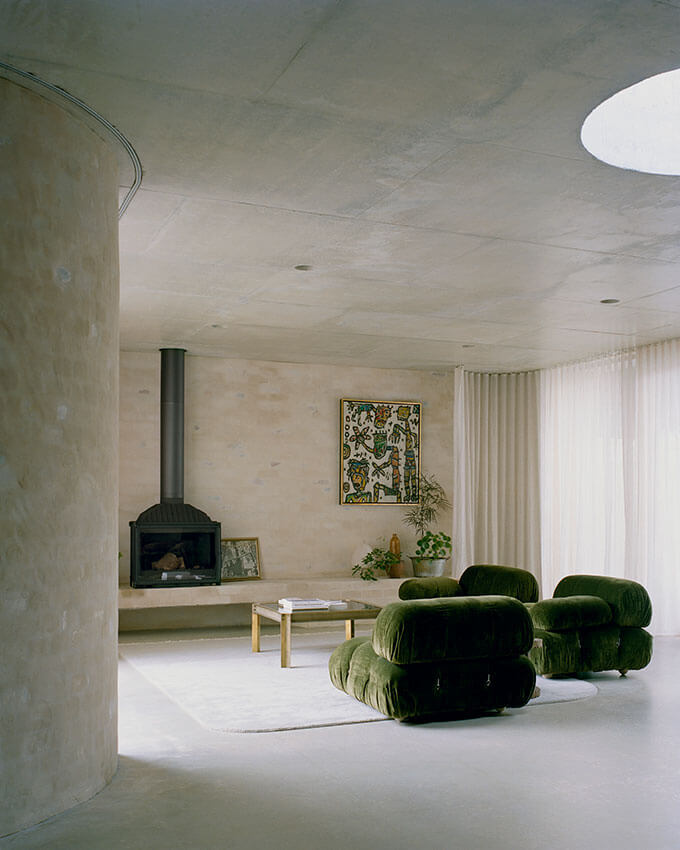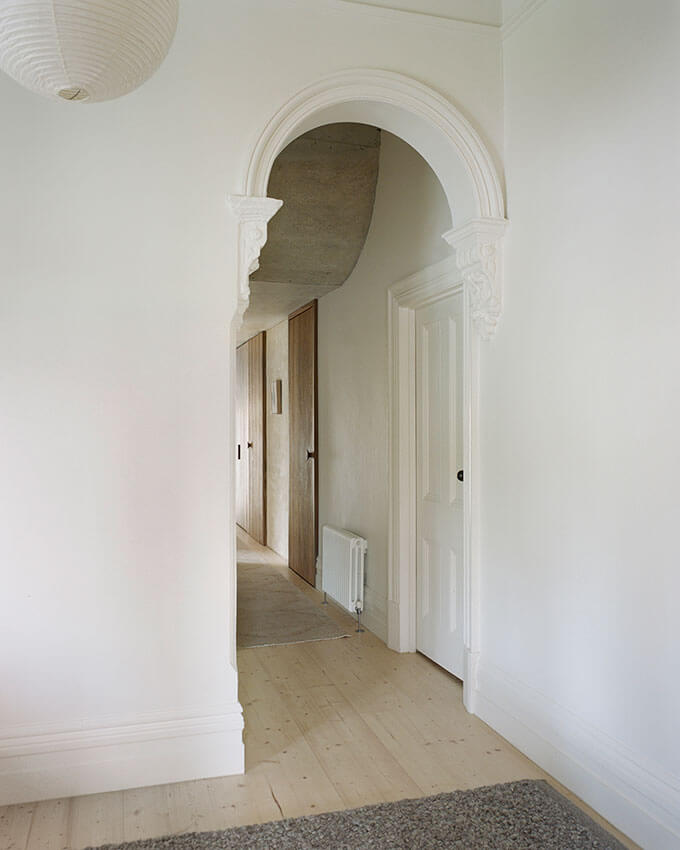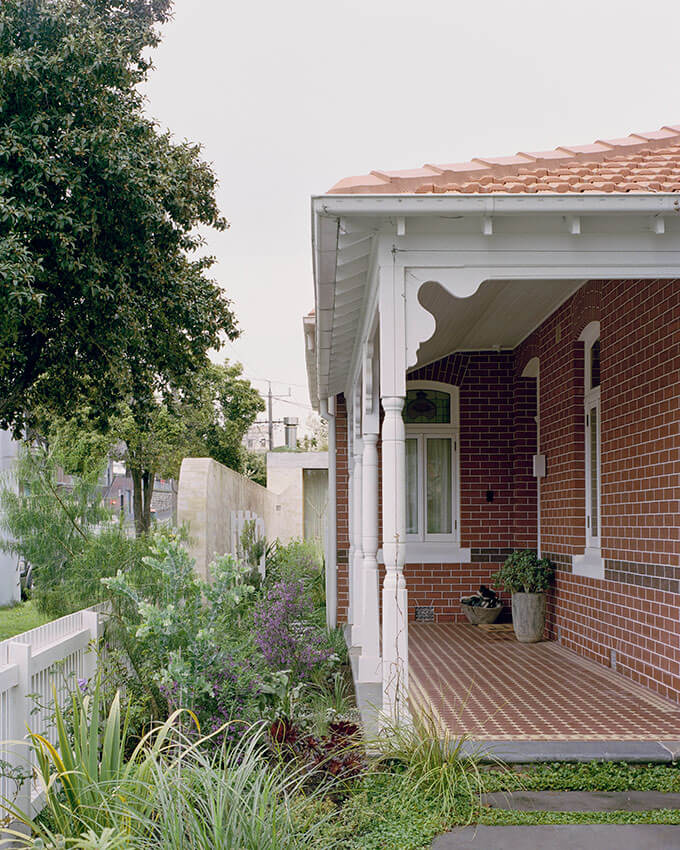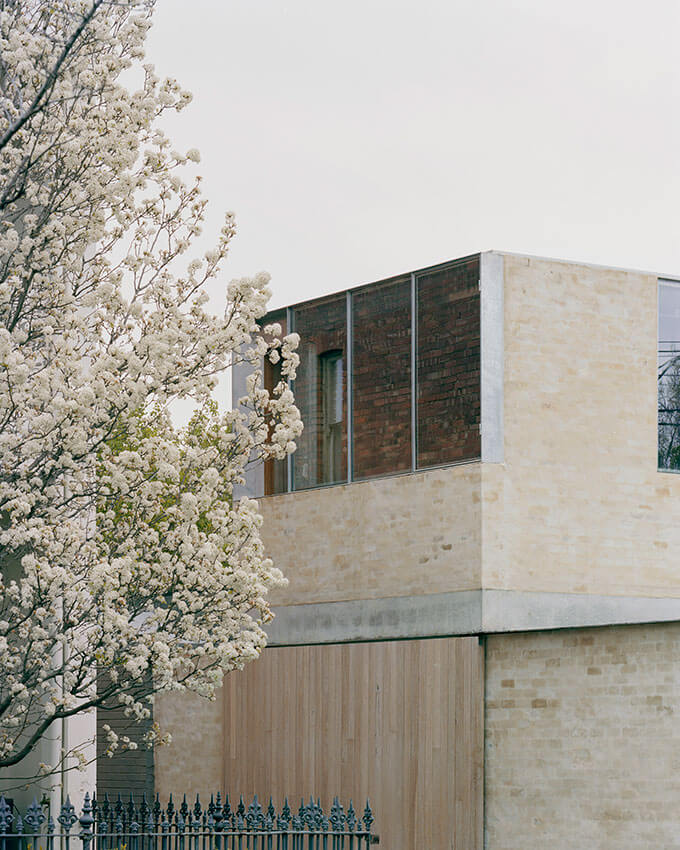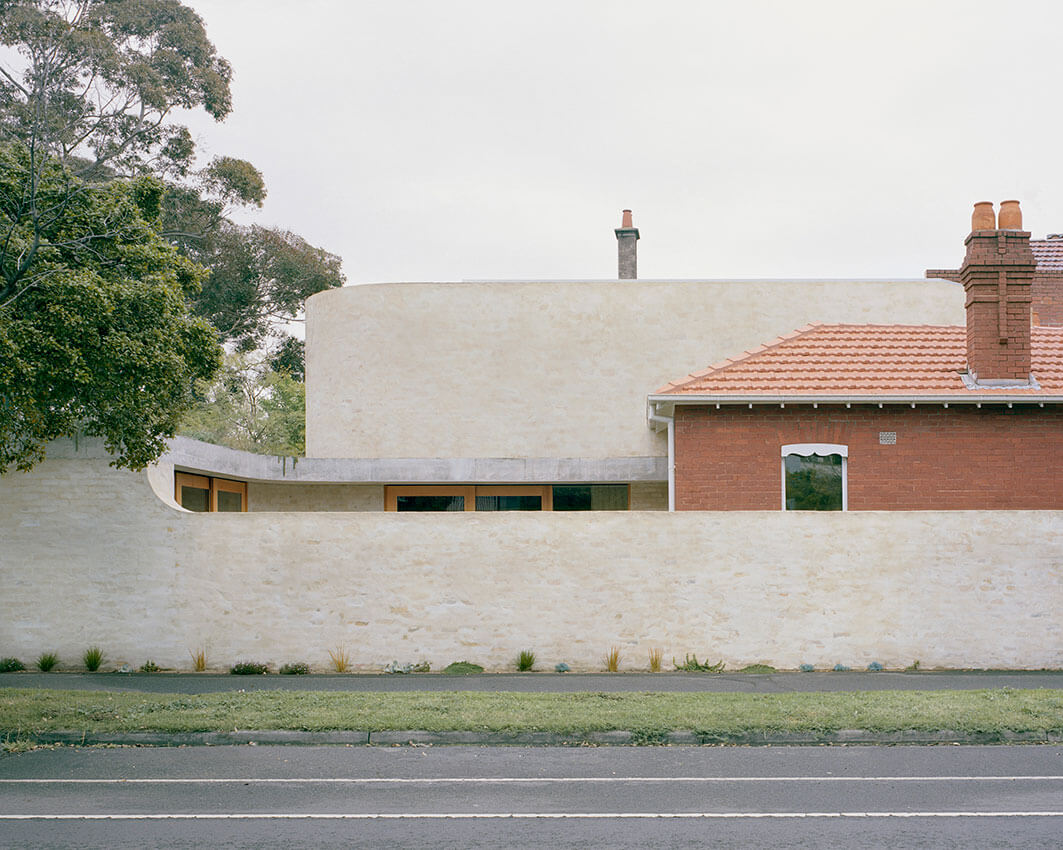Mary Street House | Edition Office
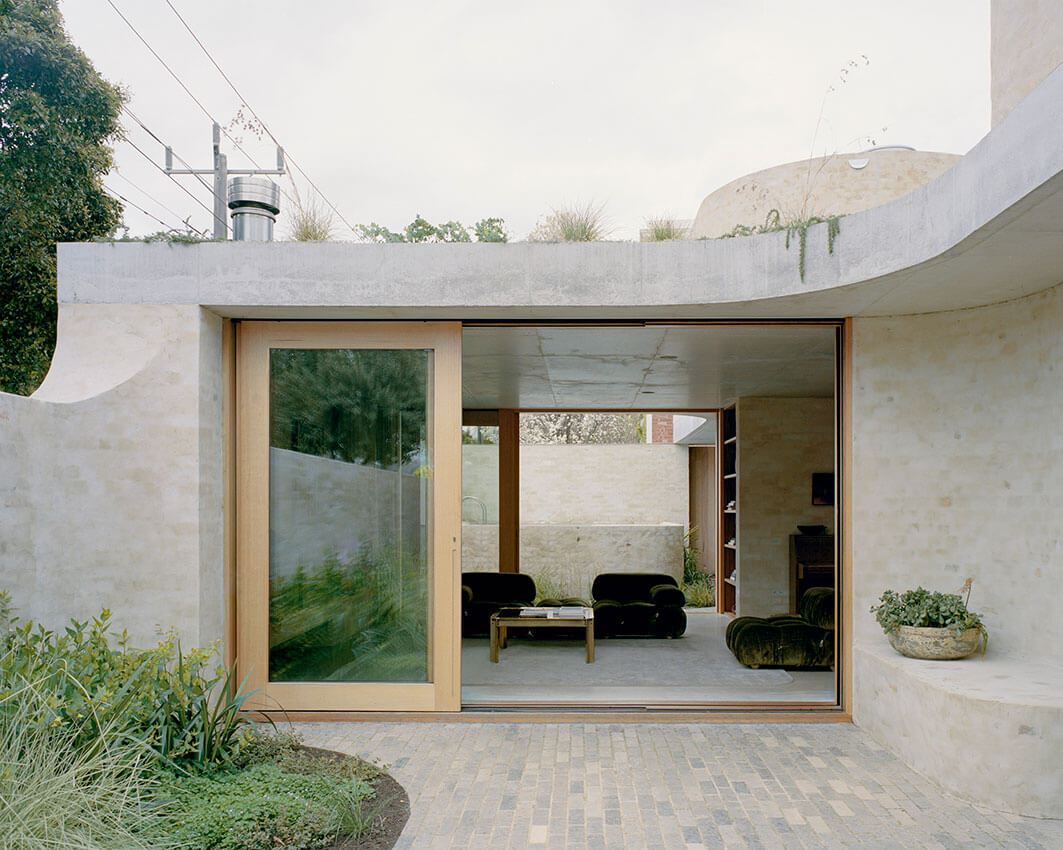
2023 National Architecture Awards Program
Mary Street House | Edition Office
Traditional Land Owners
Bunurong
Year
Chapter
Victorian
Category
Interior Architecture
Residential Architecture – Houses (Alterations and Additions)
Builder
Photographer
Media summary
The Mary Street House is a reimagining of a well-worn Federation era home. Softly finished recycled-brick walls shape the new social spaces of the house, creating a sequence of indoor and outdoor rooms within the remaining boundaries of the site. The continuous motif of the undulating brick walls continues around the house to form the protective side fence that shelters the home from the traffic noise of the busy road while extending around and lovingly embracing the side of the original heritage home.
A pair of enigmatic brick volumes rest atop the planted concrete roof of the new wing. One volume, extending out from the ridge of the terracotta tiles of the original roof, houses the principal bedroom suite with its own private courtyard garden, while the other holds a small studio. These private retreats are universally lined in deeply-toned spotted gum plywood, creating immersive spaces of quietude and sanctuary.
2023
Victorian Architecture Awards Accolades
Shortlist – Residential Architecture – Houses (Alterations and Additions)
We open the low picket-fence gate and walk across the heritage veranda. The Mary St corner ignites curiosity and wonderful interactions on the street. Friends come and go; local strangers stop to ask questions about the plants and structures above.
The busy urban vibes melt away when we step inside and we are immediately calmed, grounded by the temperament of the new house. Spaces are exacting yet practical. Private sanctuaries to study and rest. Living areas which are generous and welcoming for informal family get-togethers, for three growing boys to play, and just as easily stage far more sophisticated gatherings.Client perspective
Project Practice Team
Aaron Roberts, Design Architect
Erin Watson, Project Architect
Kim Bridgland, Design Architect
Project Consultant and Construction Team
Amanda Oliver, Landscape Consultant
Detail Green, ESD Consultant
Measure Consulting Engineers, Structural Engineer
Connect with Edition Office
